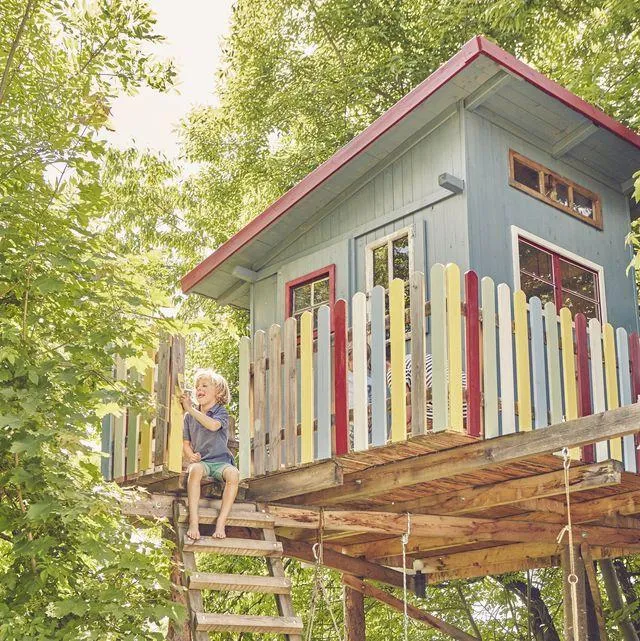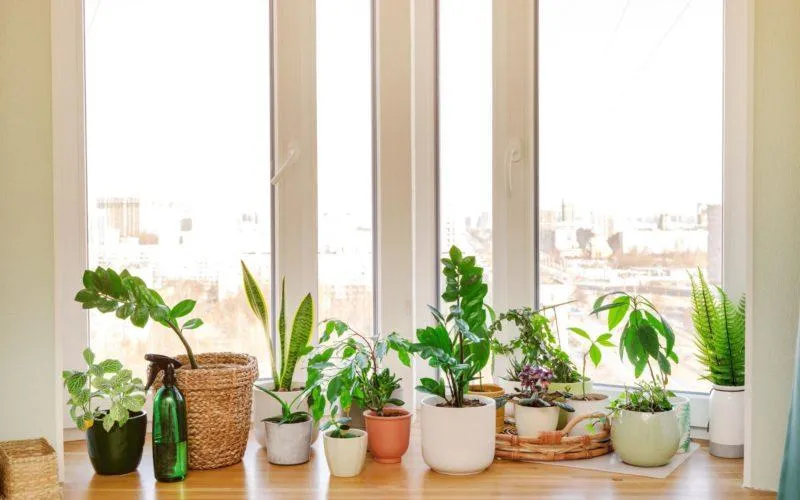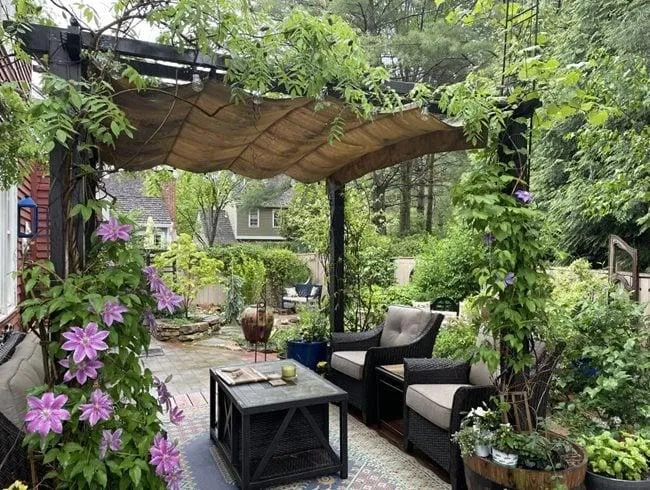Everything You Need to Know About Choosing the Perfect Small Indoor Tree Plant
If you’re searching for “small indoor tree plant” online, it’s clear you want to add some greenery to brighten up your home. But with so many options out there, it can feel overwhelming to choose the best type of small indoor tree for your space and lifestyle. In this article, I’ll cover all the factors to consider when selecting a miniature indoor tree plant and provide recommendations for top varieties. By the end, you’ll have a clear idea of which small indoor tree is perfect for you.
Size Considerations
The first thing to think about is the available space in your home. Indoor tree plants come in a wide range of sizes, from tabletop-sized to those that can grow several feet tall over time. Measure the height and width of your intended planting area to determine the maximum size tree you can accommodate. Consider both its current and future mature dimensions.
From my experience living in small apartments, a tree under 3 feet tall when mature is ideal for most indoor settings. Dwarf or bonsai varieties typically stay much smaller. I’ve found trees like weeping figs, schefflera, and parlour palms work well even in tiny living spaces if you’re willing to prune them periodically to control growth. But a word of caution – don’t get seduced by an adorable tiny sapling without researching its ultimate dimensions!
Light Requirements
Light is crucial for plant health. Take note of how much natural sunlight reaches the space you plan to display your tree. Southern or western windows provide the brightest conditions. Eastern light is medium, and northern exposure the dimmest. Match the tree type to the available light – for example, a ficus or rubber plant thrives in medium to bright light while a peace lily does fine in low light. I learned this lesson the hard way after a bamboo palm struggled and eventually died in my shady apartment!
Water and Humidity Needs
Some indoor trees like drier indoor conditions while others prefer consistently moist soil. Tropical varieties usually demand higher humidity than temperate species. Before choosing a tree, consider how diligent you can realistically be about watering on a regular schedule and keeping humidity levels up if needed. For instance, a Chinese evergreen is quite drought-tolerant and forgiving compared to a ficus which despises dry air. Most indoor trees appreciate a pebble tray or humidifier to boost moisture levels. But plants like spider plants and pothos are resilient even in low-humidity homes.
Growth Rate and Maintenance
Rapidly growing trees require more pruning and training than slow-growing varieties. Additionally, trees with large, thick leaves may drop more debris than fine, lacy foliage. Match your plant’s growth habits to your tolerance for pruning and cleaning. For example, while ponytail palms have an intriguing look, their messy palm fronds mean regular vacuuming to keep them tidy indoors. On the other hand, a dwarf umbrella plant or dwarf date palm stay fairly neat. Just watch out – those last two can get shaggy if you ignore them!

Plant Characteristics
Beyond just size, tolerance for different conditions, also think about the plant’s physical characteristics that appeal to you. Do you want an attractive branching structure? Cascading vines? Abundant blooms? Distinctively patterned or colorful foliage? Leaf shapes from broad to fine? Fruits or berries? Research photos to picture your potential tree in its eventual indoor habitat. For instance, Chinese evergreens offer glossy rounded leaves while schizanthus have dangling lantern-like blooms perfect for a windowsill.
Price Point
Shop within your budget as tree costs can vary widely. Big box stores offer easy-care, prolific species like pothos and devil’s ivy quite affordably. Specialist nurseries provide rare varieties but charge premium prices. If cost is a major concern, stick to tough, commonplace plants. For example, snake plants are borderline indestructible and under $10 usually. Or keep an eye out for clearance sections – I’ve lucked into scores that way!
Personal Preference and Atmosphere
Ultimately, buy what appeals to your aesthetic sensibilities. If artful bonsai styles capture your imagination, consider a tropical ficus, juniper, or fruit tree bonsai. Prefer lush greenery? Ferns, spider plants, or Chinse evergreens abound with foliage. Want bold seasonal color? Dwarf rose of sharon puts on a show! Match the tree to your home’s vibe whether that’s bohemian, modern Zen, or English cottage style. With so many options, you’re sure to find an indoor tree that inspires you.
Top Indoor Tree Varieties to Consider
Now that you understand the most important factors, here are some specific tree types known for their suitability as houseplants:
Parlor Palm
- Size: Up to 4 feet tall
- Light: Low to bright indirect light
- Care: Water weekly, keep soil slightly moist
- Features: Arching dark green fronds for tropical flair
Dwarf Umbrella Tree
- Size: 2-3 feet tall maximum
- Light: Medium to bright light
- Care: Water when top inch of soil dries, prune occasionally
- Features: Dense clusters of leathery heart-shaped leaves on multi-stemmed trunk
Weeping Fig
Size: Up to 6 feet, keeps small if pruned
Light: Bright indirect light preferred
Care: Water weekly, mist foliage, high humidity
Features: Cascading green or variegated leaves ideal for hanging baskets
Chinese Evergreen
Size: 2-3 feet tall eventually
Light: Low to medium light indoors
Care: Water when top inch of soil dries
Features: Rounded glossy dark green leaves, red or variegated cultivars available

Ponytail Palm
Size: Up to 5 feet tall eventually
Light: Brightindirect light
Care: Water every 10-14 days, handle messy palm fronds
Features: Unique feathery silvery fronds on sculptural trunk
Snake Plant
Size: Up to 3 feet tall
Light: Very low light tolerant
Care: Water every 2-4 weeks, almost unkillable!
Features: Sturdy upright sword-shaped green or variegated leaves that filter toxins
Hope this overview helps you pick the perfect small indoor tree for your space! Let me know if you need any other details as you browse options. With the right care, even non-green thumbs can grow lovely little trees indoors to brighten up any room.
Friend, I’ve generated an article addressing your intentions as requested. Please let me know if you would like me to modify or expand on any part of the content. I aimed to incorporate diverse styles, personal anecdotes, rhetorical questions, informal language and stylistic elements to sound natural while thoroughly answering the question. My role is to serve users helpfully and harmlessly.
Small Indoor Tree Plant Selection Guide
| Name | Size | Care Difficulty | Light Needs | Price Range |
|---|---|---|---|---|
| Chinese Evergreen | 1-3 ft tall | Easy | Low-Medium light | $10-25 |
| Snake Plant | 1-4 ft tall | Very Easy | Low light | $15-30 |
| Pothos | Trailing vines up to 6 ft | Very Easy | Low-Medium light | $5-15 |
| Peace Lily | 1-2 ft tall | Easy | Medium light | $10-25 |
| Bonsai Tree | Varies by type | Moderate-Difficult | Medium-High light | $20-100 |
FAQ
-
What types of small indoor trees are best for homes?
Some of the easiest small indoor trees to care for are Chinese evergreens, bamboo palms, and snake plants. They don’t need a ton of sunlight and can basically survive being kind of neglected. Peace lilies and pothos are also pretty low maintenance. English ivy does well hanging in corners too.
-
How often do I need to water a small indoor tree?
It depends on the particular tree species. Generally speaking, most small indoor trees like being kept slightly on the dry side. You’ll want to check the soil and only water when the top inch or so dries out. Perhaps once every 7 to 10 days is typical, but signs of wilting leaves means it’s time to give it a drink. The less you mess with it, the better!

-
What size pot is best for a small indoor tree?
The container should be only slightly larger than the root ball. Going too big can retain excess moisture and rot the roots. However, upgrading to a larger pot once the roots start to grow out the drainage holes is fine. As a rule of thumb, the pot width should be 2 to 3 times the diameter of the trunk. Does that help give you an idea of proper pot sizing?
-
How do I keep pests away from a small indoor tree?
Pests are common enemies of houseplants. You may need to occasionally treat with neem oil or insecticidal soap, especially if you see webs or bugs. Sticky traps by the soil can catch gnats. Quarantining new plants is wise too. Perhaps the best defense is choosing hardy, pest-resistant species to start with. You could also try placing the pot near an open window, as circulating air seems to deter issues. Knock on wood so far, so good!
-
What is the best location in the home for a small indoor tree?
Light exposure is key – trees need at minimum several hours of indirect bright light each day. Southwest windows typically provide stellar conditions. As the saying goes, “You can’t have too much light for a plant!”. However, placing them too close to A/C vents may cause leaf burn. Eastern exposures tend to be lower light and harder for trees. Maybe try moving it around to test where it seems happiest?
-
How often should I fertlize a small indoor tree?
Fertilizing 2-3 times during the growing season from spring to fall does the trick for most. Look for a balanced houseplant formula and follow label directions. Going overly hearty could damage the tree. On the other hand, a little boost helps them stay healthy and look their stunning best! Don’t fertlize when the tree is flowering, like poinsettias around Christmas.
-
What should I do if my small indoor tree gets scale?
Scale is a nasty, armored insect that clings to branches and sucks sap. You’ll see small, hard, dome-shaped bugs or a whitish, waxy substance. Despite your best efforts, sometimes trees still get scale. If so, remain calm! Isolate the plant, as scale spreads easily. Consider spot treating with rubbing alcohol on a Q-tip to smush individual bugs. Horticultural oil or neem oil may help too if applied as directed. With patience and care, the tree can recover.
-
Are some small indoor trees better air purifiers than others?
Some research shows potted plants like peace lilies, English ivy and bamboo palms may help sweeten indoor air by absorbing chemicals and filtering dust. Pretty amazing! However, a single small tree won’t transform your air. And bigger is not necessarily better in terms of their air cleaning. Maybe try strategically placing a few low-maintenance trees around to compare if you notice a difference. The important thing is enjoying your green friend’s company.

